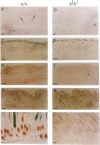Abstract
Mice homozygous for the piebald lethal (sl) mutation have a predominantly white coat due to the absence of neural crest-derived melanocytes in the hair follicles. To investigate the time in embryonic development when the s1 gene affects the melanocyte lineage, we compared the distribution of melanocyte precursors in wild-type and mutant embryos, using an antibody specific for tyrosinase-related protein 2 (TRP-2). TRP-2 positive cells were first observed adjacent to the anterior cardinal vein in 10.5-day postcoitem wild-type embryos. From 11.5 to 13.5 days postcoitem, there was a nonuniform distribution of TRP-2 positive cells along the anterior-posterior axis, with the highest density of cells in the head and tail regions. Along the dorsal-ventral axis, the cells were restricted to positions lateral, but never dorsal, to the neural tube. In homozygous sl/sl embryos TRP-2 staining was restricted to the non-neural crest-derived melanocytes of the pigmented retinal epithelium and the telencephalon. Few positive cells were seen in areas that will form neural crest-derived melanocytes in the inner ear, skin, hair follicles, leg musculature, or heart. We conclude that the piebald lethal mutation acts prior to the onset of TRP-2 expression to disrupt the development of neural crest-derived melanocytes. The non-uniform distribution of melanoblasts in wild-type mice suggests that piebald acts stochastically to affect melanocyte development.
Full text
PDF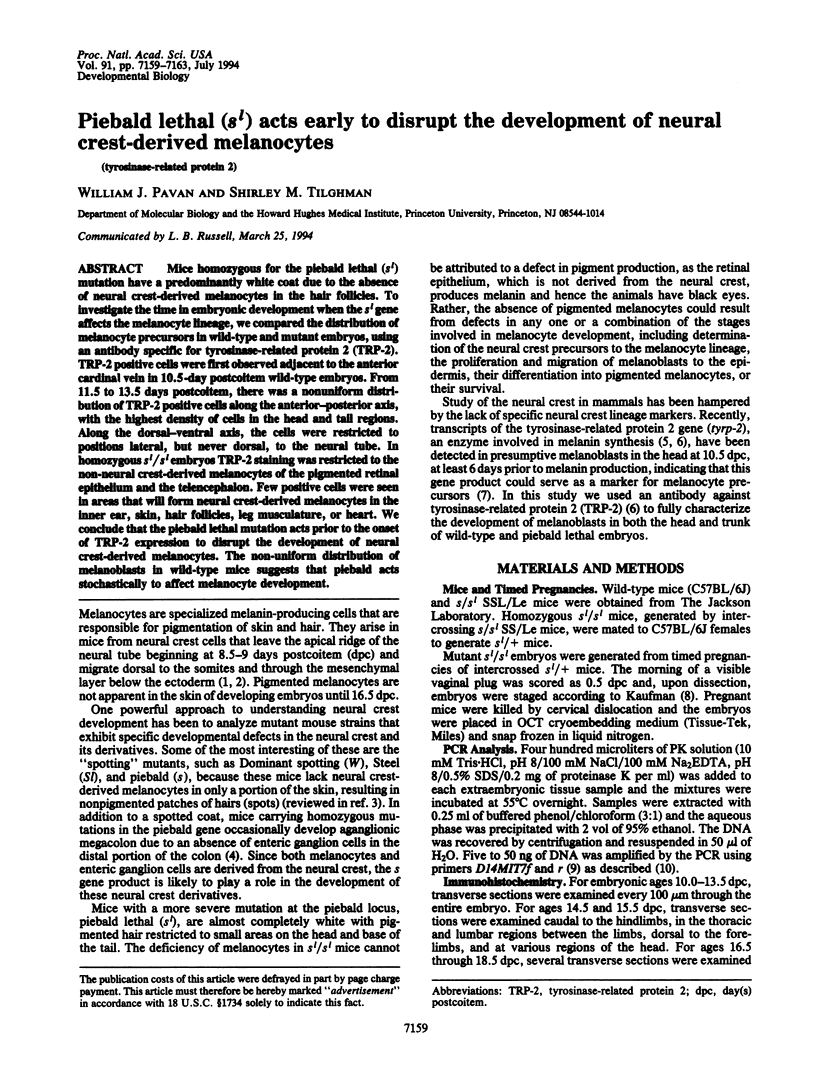
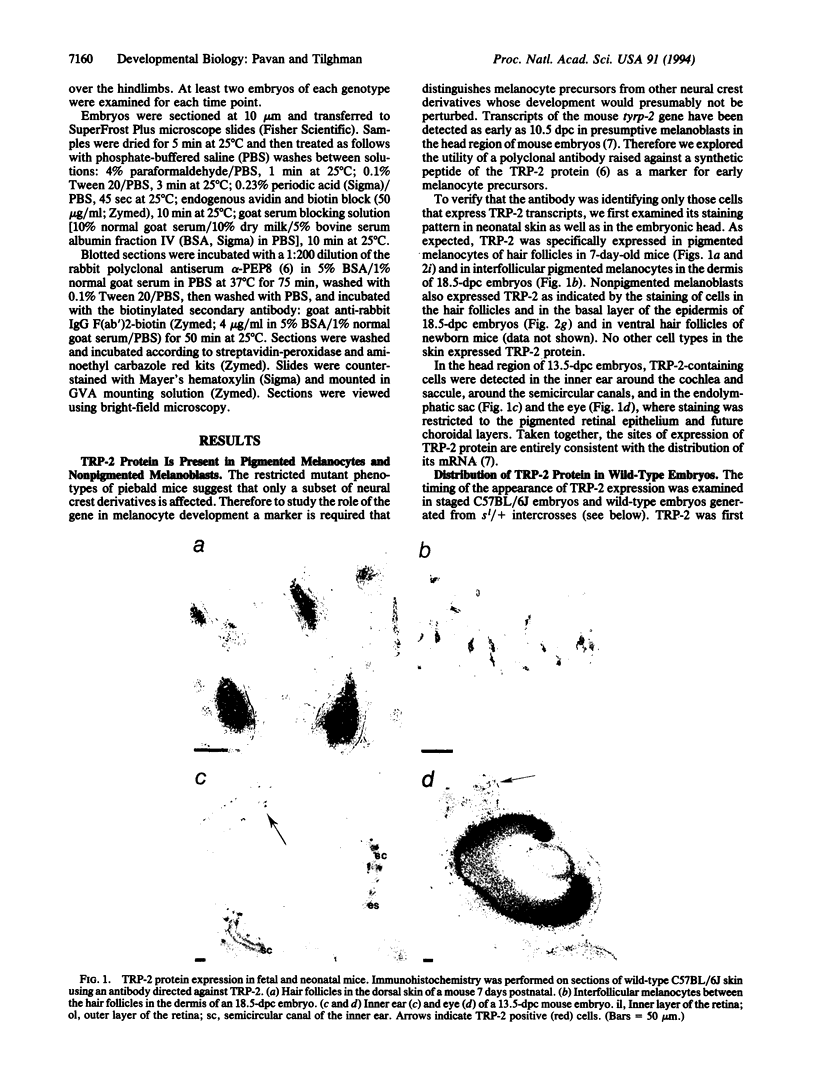
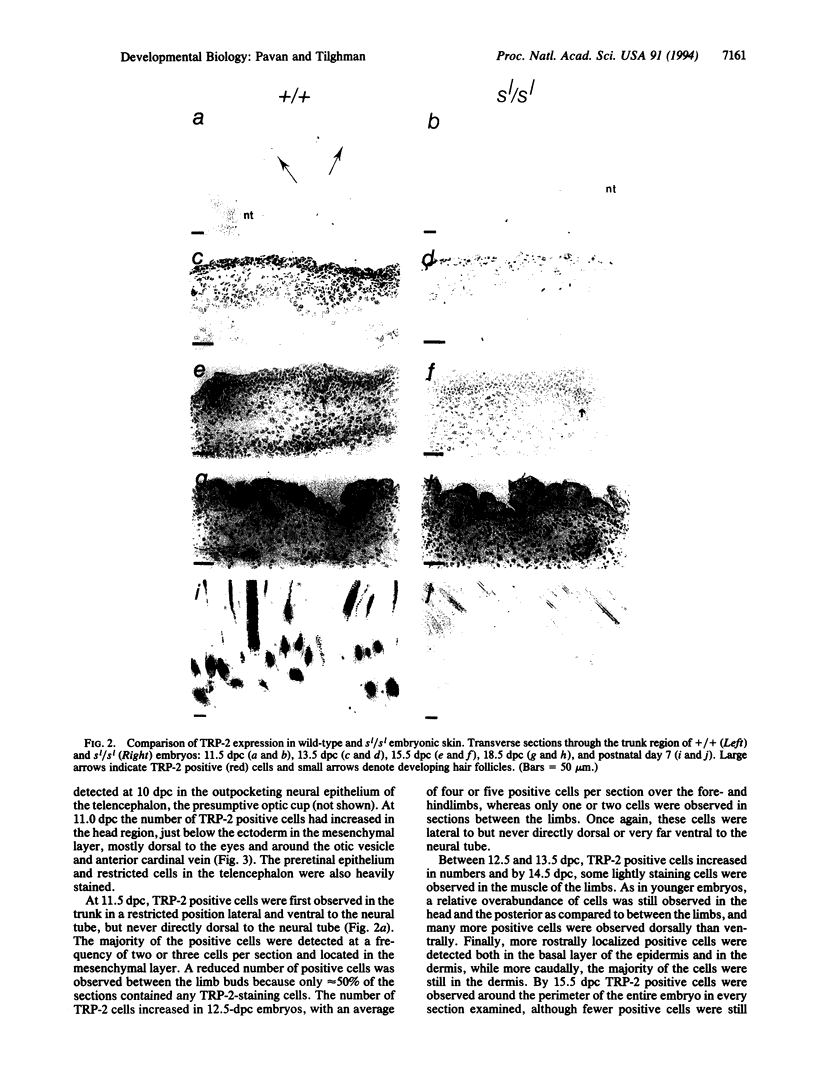
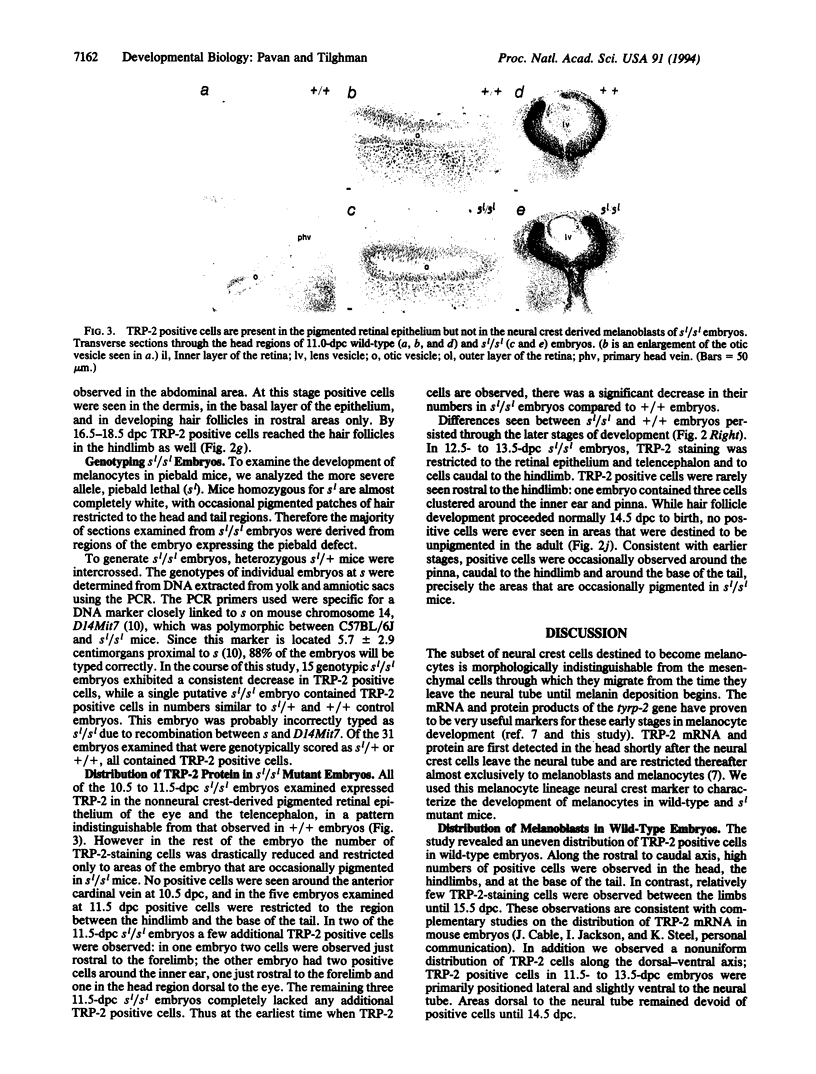
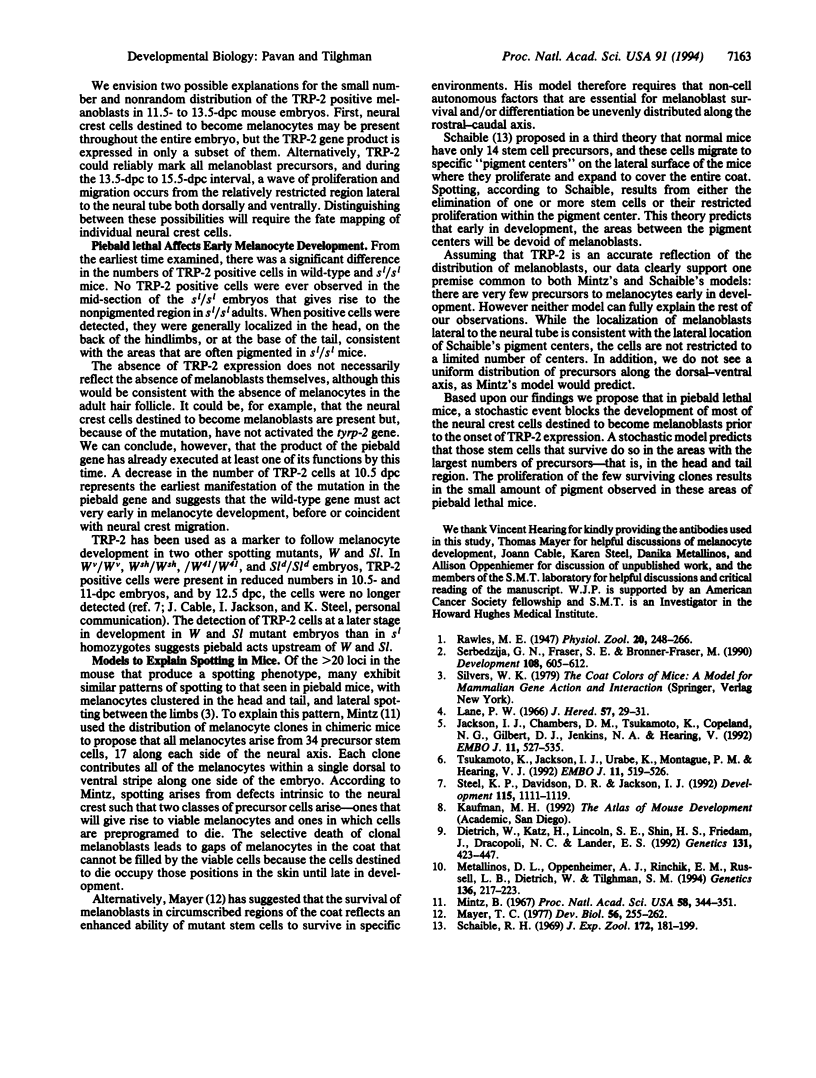
Images in this article
Selected References
These references are in PubMed. This may not be the complete list of references from this article.
- Dietrich W., Katz H., Lincoln S. E., Shin H. S., Friedman J., Dracopoli N. C., Lander E. S. A genetic map of the mouse suitable for typing intraspecific crosses. Genetics. 1992 Jun;131(2):423–447. doi: 10.1093/genetics/131.2.423. [DOI] [PMC free article] [PubMed] [Google Scholar]
- Jackson I. J., Chambers D. M., Tsukamoto K., Copeland N. G., Gilbert D. J., Jenkins N. A., Hearing V. A second tyrosinase-related protein, TRP-2, maps to and is mutated at the mouse slaty locus. EMBO J. 1992 Feb;11(2):527–535. doi: 10.1002/j.1460-2075.1992.tb05083.x. [DOI] [PMC free article] [PubMed] [Google Scholar]
- Lane P. W. Association of megacolon with two recessive spotting genes in the mouse. J Hered. 1966 Jan-Feb;57(1):29–31. doi: 10.1093/oxfordjournals.jhered.a107457. [DOI] [PubMed] [Google Scholar]
- Mayer T. C. Enhancement of melanocyte development from piebald neural crest by a favorable tissue environment. Dev Biol. 1977 Apr;56(2):255–262. doi: 10.1016/0012-1606(77)90268-8. [DOI] [PubMed] [Google Scholar]
- Metallinos D. L., Oppenheimer A. J., Rinchik E. M., Russell L. B., Dietrich W., Tilghman S. M. Fine structure mapping and deletion analysis of the murine piebald locus. Genetics. 1994 Jan;136(1):217–223. doi: 10.1093/genetics/136.1.217. [DOI] [PMC free article] [PubMed] [Google Scholar]
- Schaible R. H. Clonal distribution of melanocytes in piebald-spotted and variegated mice. J Exp Zool. 1969 Oct;172(2):181–199. doi: 10.1002/jez.1401720205. [DOI] [PubMed] [Google Scholar]
- Serbedzija G. N., Fraser S. E., Bronner-Fraser M. Pathways of trunk neural crest cell migration in the mouse embryo as revealed by vital dye labelling. Development. 1990 Apr;108(4):605–612. doi: 10.1242/dev.108.4.605. [DOI] [PubMed] [Google Scholar]
- Steel K. P., Davidson D. R., Jackson I. J. TRP-2/DT, a new early melanoblast marker, shows that steel growth factor (c-kit ligand) is a survival factor. Development. 1992 Aug;115(4):1111–1119. doi: 10.1242/dev.115.4.1111. [DOI] [PubMed] [Google Scholar]
- Tsukamoto K., Jackson I. J., Urabe K., Montague P. M., Hearing V. J. A second tyrosinase-related protein, TRP-2, is a melanogenic enzyme termed DOPAchrome tautomerase. EMBO J. 1992 Feb;11(2):519–526. doi: 10.1002/j.1460-2075.1992.tb05082.x. [DOI] [PMC free article] [PubMed] [Google Scholar]




